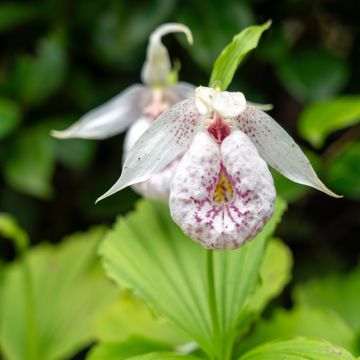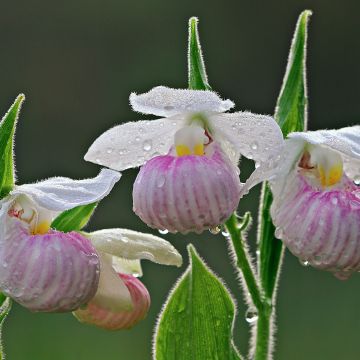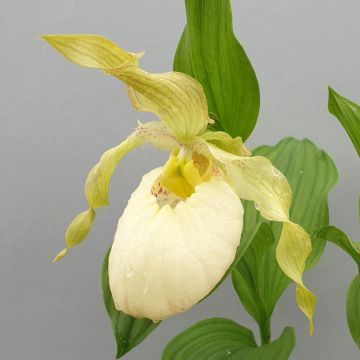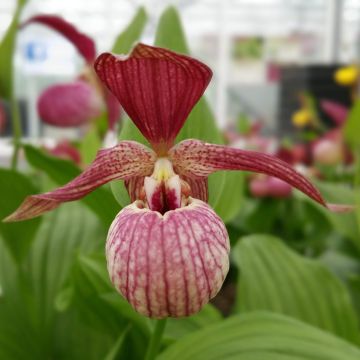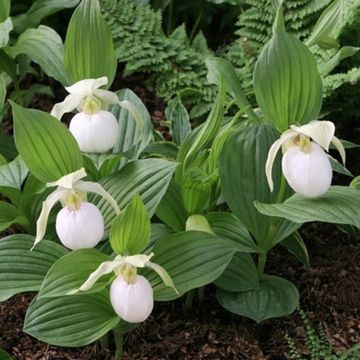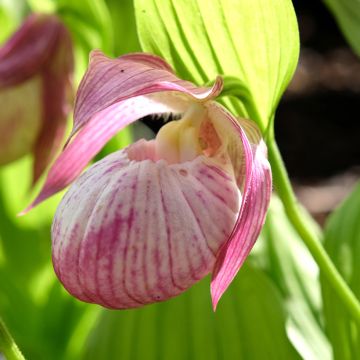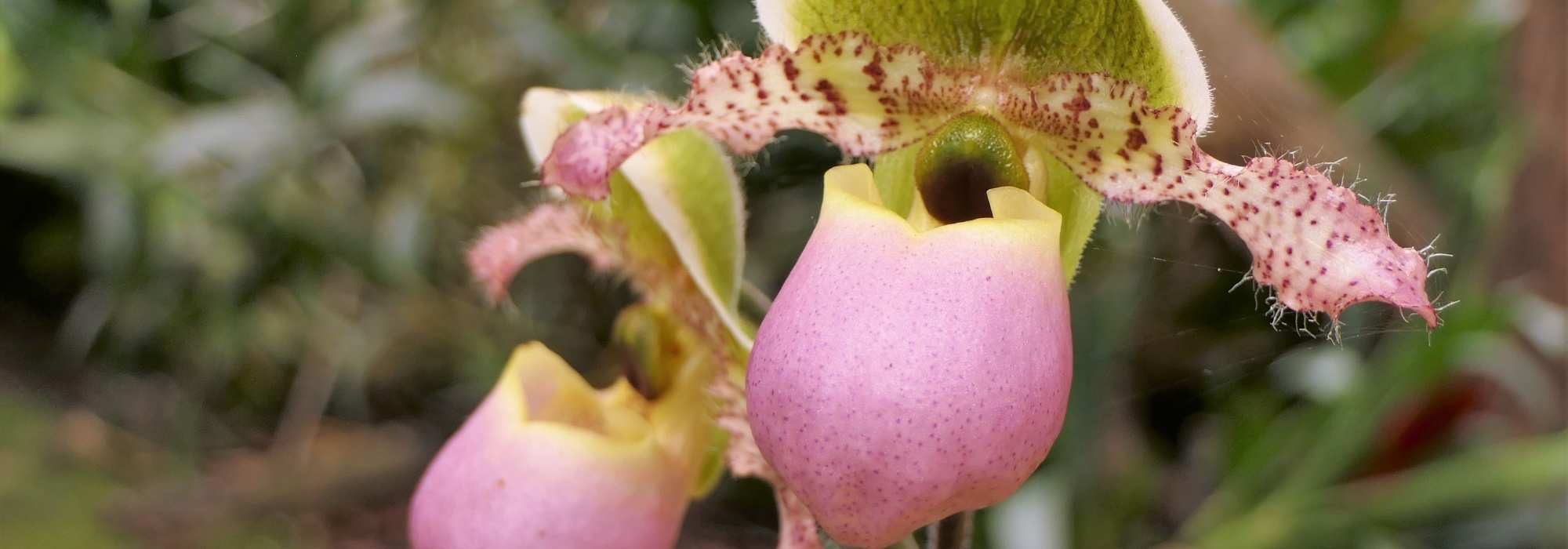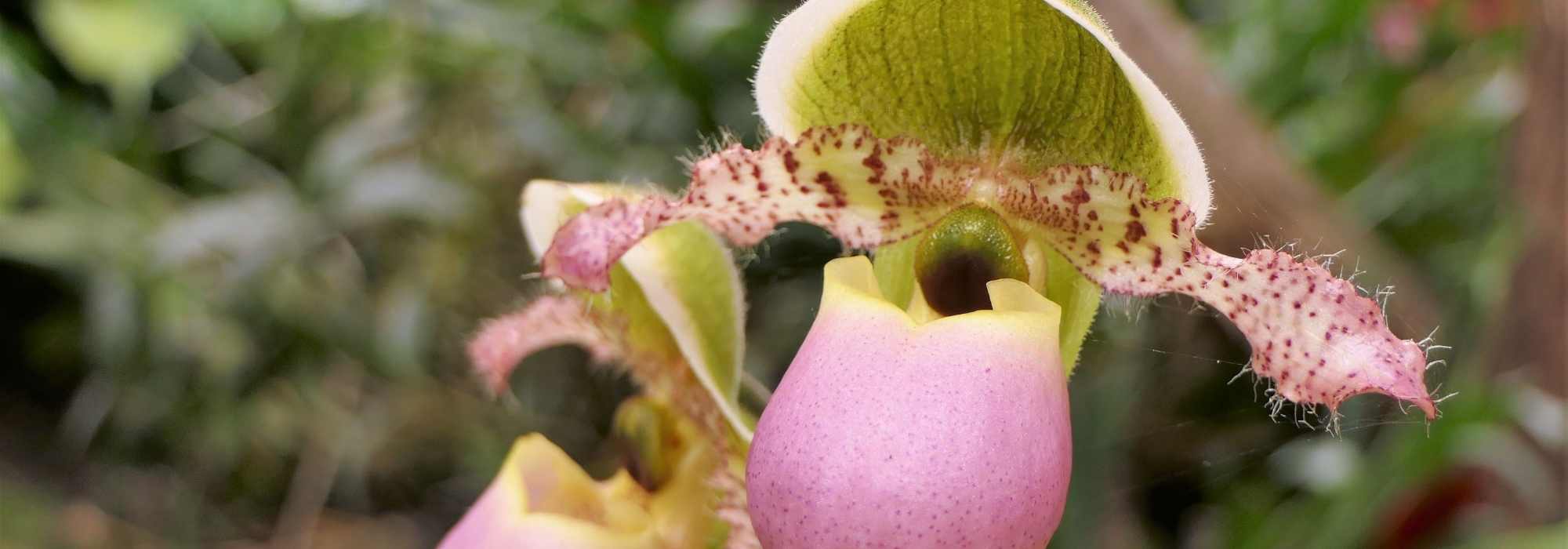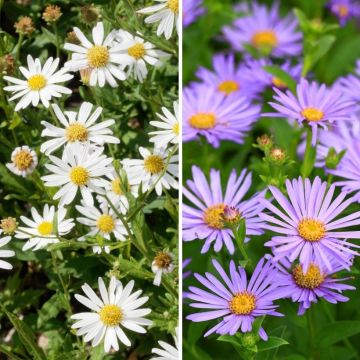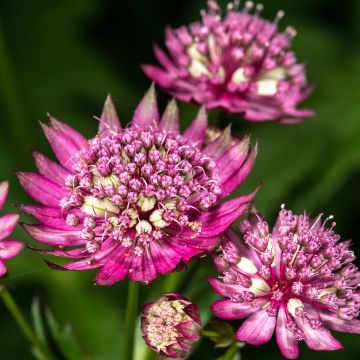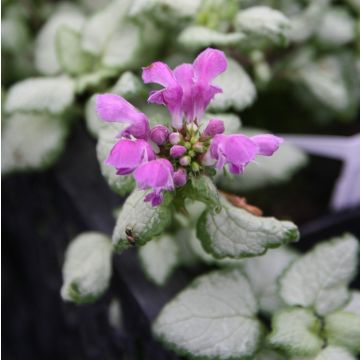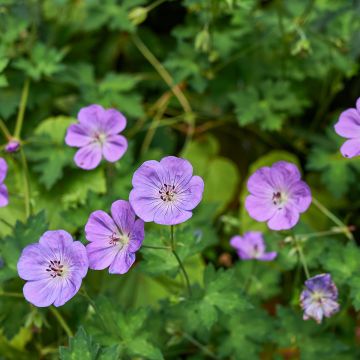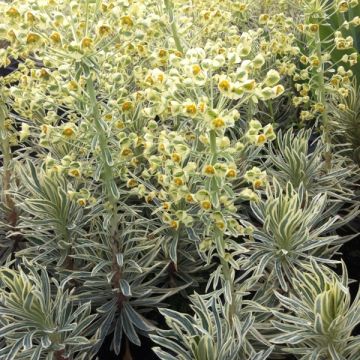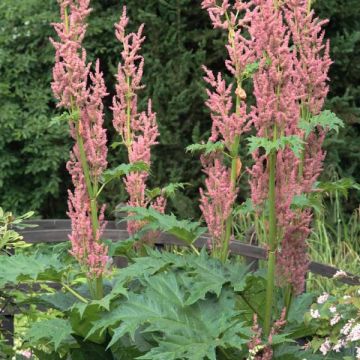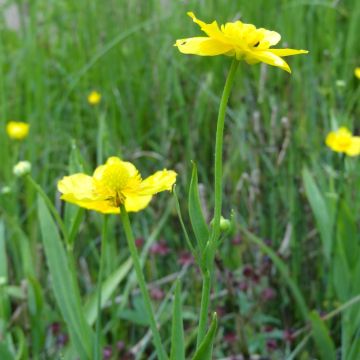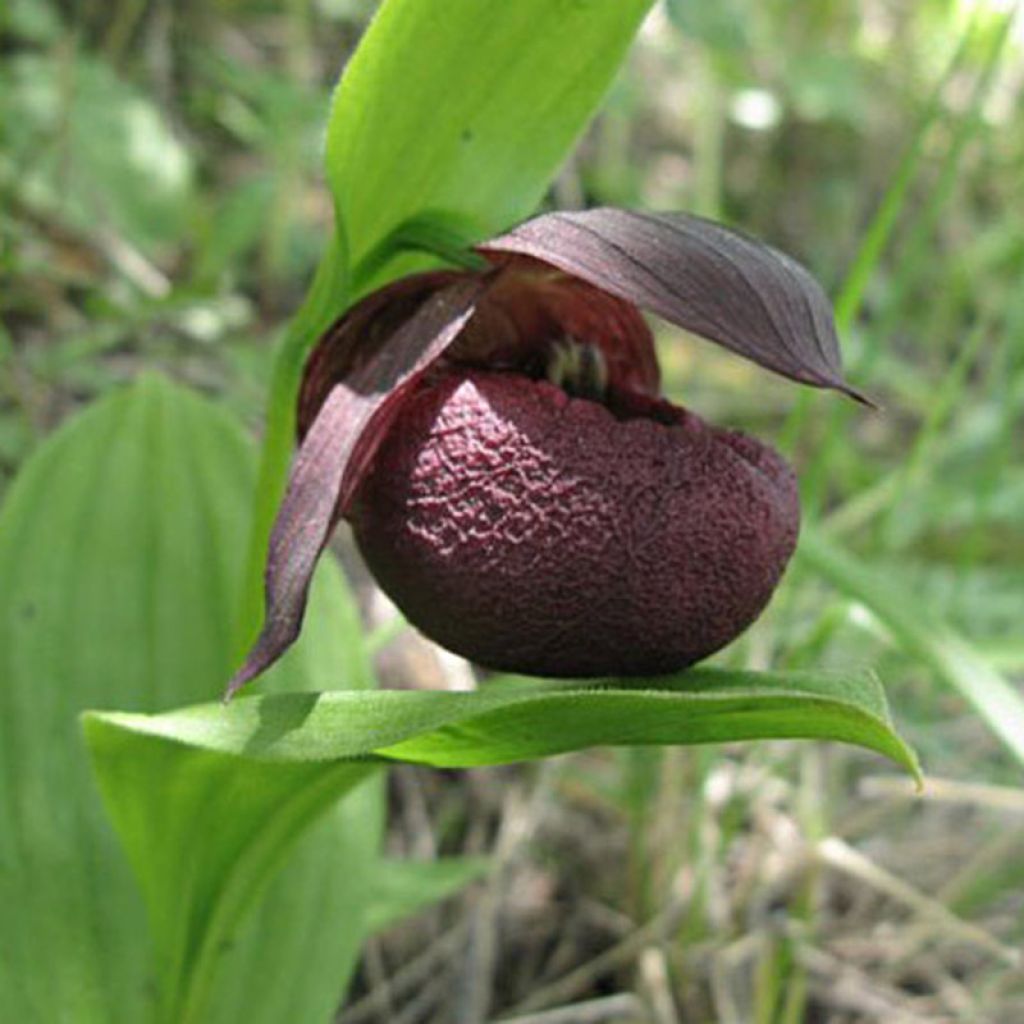

Cypripedium smithii - Sabot de Vénus rouge et pourpre
Cypripedium smithii
Cypripedium smithii
Purple Lady's Slipper
Special offer!
Receive a €20 voucher for any order over €90 (excluding delivery costs, credit notes, and plastic-free options)!
1- Add your favorite plants to your cart.
2- Once you have reached €90, confirm your order (you can even choose the delivery date!).
3- As soon as your order is shipped, you will receive an email containing your voucher code, valid for 3 months (90 days).
Your voucher is unique and can only be used once, for any order with a minimum value of €20, excluding delivery costs.
Can be combined with other current offers, non-divisible and non-refundable.
Why not try an alternative variety in stock?
View all →This plant carries a 12 months recovery warranty
More information
We guarantee the quality of our plants for a full growing cycle, and will replace at our expense any plant that fails to recover under normal climatic and planting conditions.
Would this plant suit my garden?
Set up your Plantfit profile →
Description
Cypripedium smithii, recently renamed Cypripedium calcicolum is an extremely hardy Lady's Slipper, whose astonishing and highly recognizable flowers are composed of red petals and sepals marbled with white and a very swollen petal (the lip) purple in colour, with a shiny and granulose appearance. This garden orchid is a montane species, accustomed to limestone substrates, grassy slopes, and open spaces under the cover of deciduous bushes. It will particularly appreciate high-altitude areas and the freshness of alpine gardens.
Native to the mountains of the northern Chinese province of Sichuan, Cypripedium smithii is found above 2400m (7874ft) altitude. This garden orchid has strange and fascinating flowers. The Lady's Slipper forms a clump of large, light green and vibrant leaves, oval to elliptical in shape, with very prominent parallel veins, starting in spring. In our climates, it will reach a height of 30 to 50cm (12 to 20in). Flowering occurs in spring, sometimes absent in certain years, and happens when the plant is at least 4 or 5 years old. The solid and robust flower stem, measuring between 40cm (16in) in height, grows directly from a very large cylindrical rootstock. It is furnished with leaves all the way up to the top. At the tip of each stem, a solitary flower appears. It has the characteristic shape of Cypripedium flowers, composed of red petals and sepals marbled with white, tapering, dominating a round 'slipper' lip, particularly swollen, dark purple in colour, with a slightly granulose and shiny appearance. The purple-violet colour is even more pronounced when the plant grows in shade. During winter, the foliage disappears and the plant persists in the form of a rootstock.
Cypripedium smithii is a very hardy montane perennial. It grows on the edge of forests, in partial shade, in light, cool, humus-rich soils, slightly acidic, neutral, or slightly alkaline. Plant it in shade, in a cool rock garden, between rocks, or at the edge of a fresh understorey, in the company of Arisaema, Calanthe, Paris, Bletilla, and ferns.
When you receive your orchids, handle them with care: these plants produce few roots and are delicate!
Cypripedium smithii in pictures


Flowering
Foliage
Plant habit
Botanical data
Cypripedium
smithii
Orchidaceae
Purple Lady's Slipper
China
Other Cypripedium
View all →Planting and care
Plant Cypripedium smithii in partial shade, in a soil rich in humus, light and moist, close to neutral. This terrestrial orchid does not tolerate heavy and waterlogged soils. Add 1/3 peat and 1/3 fine gravel to the planting hole and mix it with your topsoil. Water the plant sparingly, taking care to keep the soil moist in summer. Protect the stump during the first year with a 10cm (4in) thick layer of dead leaves. Pot cultivation is also possible: Plant this Cypripedium in terracotta pots with a diameter of 22cm (9in). You can use the following substrate: - 70% quartz sand (the one used in aquariums), 30% beech leaf compost for example. Use last year's soil layer. Mix the elements carefully. Choose a location where the plants will only receive morning sun. Shade from deciduous trees is preferable to that from evergreen trees. Shade from a wall is also suitable. Bury the pot in your garden soil. From spring to summer, the substrate should remain moist, without excessive humidity during the growth period until the plants go dormant. During growth, spray a special orchid fertilizer on the foliage every 3 weeks. In autumn, when the foliage turns yellow, it can be pruned. In November, install a transparent 'roof' placed on 4 stakes 50cm (20in) high above the pot, to protect your plants from winter rains. In winter, the substrate should not dry out completely. As soon as vegetation resumes, remove the winter protection. Keep an eye out for slugs and snails, which are fond of young shoots.
Planting period
Intended location
Care
Planting & care advice
This item has not been reviewed yet - be the first to leave a review about it.
Similar products
Haven't found what you were looking for?
Hardiness is the lowest winter temperature a plant can endure without suffering serious damage or even dying. However, hardiness is affected by location (a sheltered area, such as a patio), protection (winter cover) and soil type (hardiness is improved by well-drained soil).

Photo Sharing Terms & Conditions
In order to encourage gardeners to interact and share their experiences, Promesse de fleurs offers various media enabling content to be uploaded onto its Site - in particular via the ‘Photo sharing’ module.
The User agrees to refrain from:
- Posting any content that is illegal, prejudicial, insulting, racist, inciteful to hatred, revisionist, contrary to public decency, that infringes on privacy or on the privacy rights of third parties, in particular the publicity rights of persons and goods, intellectual property rights, or the right to privacy.
- Submitting content on behalf of a third party;
- Impersonate the identity of a third party and/or publish any personal information about a third party;
In general, the User undertakes to refrain from any unethical behaviour.
All Content (in particular text, comments, files, images, photos, videos, creative works, etc.), which may be subject to property or intellectual property rights, image or other private rights, shall remain the property of the User, subject to the limited rights granted by the terms of the licence granted by Promesse de fleurs as stated below. Users are at liberty to publish or not to publish such Content on the Site, notably via the ‘Photo Sharing’ facility, and accept that this Content shall be made public and freely accessible, notably on the Internet.
Users further acknowledge, undertake to have ,and guarantee that they hold all necessary rights and permissions to publish such material on the Site, in particular with regard to the legislation in force pertaining to any privacy, property, intellectual property, image, or contractual rights, or rights of any other nature. By publishing such Content on the Site, Users acknowledge accepting full liability as publishers of the Content within the meaning of the law, and grant Promesse de fleurs, free of charge, an inclusive, worldwide licence for the said Content for the entire duration of its publication, including all reproduction, representation, up/downloading, displaying, performing, transmission, and storage rights.
Users also grant permission for their name to be linked to the Content and accept that this link may not always be made available.
By engaging in posting material, Users consent to their Content becoming automatically accessible on the Internet, in particular on other sites and/or blogs and/or web pages of the Promesse de fleurs site, including in particular social pages and the Promesse de fleurs catalogue.
Users may secure the removal of entrusted content free of charge by issuing a simple request via our contact form.
The flowering period indicated on our website applies to countries and regions located in USDA zone 8 (France, the United Kingdom, Ireland, the Netherlands, etc.)
It will vary according to where you live:
- In zones 9 to 10 (Italy, Spain, Greece, etc.), flowering will occur about 2 to 4 weeks earlier.
- In zones 6 to 7 (Germany, Poland, Slovenia, and lower mountainous regions), flowering will be delayed by 2 to 3 weeks.
- In zone 5 (Central Europe, Scandinavia), blooming will be delayed by 3 to 5 weeks.
In temperate climates, pruning of spring-flowering shrubs (forsythia, spireas, etc.) should be done just after flowering.
Pruning of summer-flowering shrubs (Indian Lilac, Perovskia, etc.) can be done in winter or spring.
In cold regions as well as with frost-sensitive plants, avoid pruning too early when severe frosts may still occur.
The planting period indicated on our website applies to countries and regions located in USDA zone 8 (France, United Kingdom, Ireland, Netherlands).
It will vary according to where you live:
- In Mediterranean zones (Marseille, Madrid, Milan, etc.), autumn and winter are the best planting periods.
- In continental zones (Strasbourg, Munich, Vienna, etc.), delay planting by 2 to 3 weeks in spring and bring it forward by 2 to 4 weeks in autumn.
- In mountainous regions (the Alps, Pyrenees, Carpathians, etc.), it is best to plant in late spring (May-June) or late summer (August-September).
The harvesting period indicated on our website applies to countries and regions in USDA zone 8 (France, England, Ireland, the Netherlands).
In colder areas (Scandinavia, Poland, Austria...) fruit and vegetable harvests are likely to be delayed by 3-4 weeks.
In warmer areas (Italy, Spain, Greece, etc.), harvesting will probably take place earlier, depending on weather conditions.
The sowing periods indicated on our website apply to countries and regions within USDA Zone 8 (France, UK, Ireland, Netherlands).
In colder areas (Scandinavia, Poland, Austria...), delay any outdoor sowing by 3-4 weeks, or sow under glass.
In warmer climes (Italy, Spain, Greece, etc.), bring outdoor sowing forward by a few weeks.






























